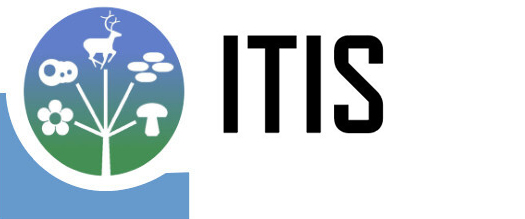
Integrated Taxonomic Information System - History
A standardized taxonomic nomenclature reference is a prerequisite for biological data sharing and comparison among different agencies and organizations. To facilitate biological data sharing within the US Federal Government, ITIS - originally known as the Interagency Taxonomic Information System - was proposed in 1993. In 1994 federal partners - including, inter alia, the National Biological Service, National Oceanic and Atmospheric Administration (NOAA), U.S. Environmental Protection Agency (EPA), U.S. Department of Agriculture (USDA), and National Museum of Natural History (NMNH) - formed the ITIS Committee and met to discuss consolidating federal efforts to define a solution for providing access to standardized names available to the partners and the public (Department of Interior, 1995).
The Executive Branch of the US government encouraged the formation of ITIS at this time because the White House Subcommittee on Biodiversity and Ecosystem Dynamics wanted to prioritize systematics research for ecosystem management and biodiversity conservation (United States, 1996, p. 39). Furthermore, the same Branch was encouraging ITIS to partner across the federal government to create high quality scientific data that are publicly accessible (Gore, 1997, p. 28). To fulfill these requirements the solution was to improve and expand the taxonomic data of the NODC Taxonomic Code, a data source of scientific names maintained by NOAA's National Oceanographic Data Center. In 1996, roughly 210,000 scientific names from NODC were inserted in a database, assigned a distinct non-intelligent identifier known as Taxonomic Serial Number, and made available online at www.itis.usda.gov.
In 1996 USGS and agency partners signed a Memorandum of Understanding with the charter "to develop, scientifically review the content of, continuously improve, and maintain a taxonomic information system to be used by the signatory agencies and others". In May of 1997 the Interagency Taxonomic Information System became the Integrated Taxonomic Information System in response to agencies outside the US expressing interest in collaborating, and because the Executive Branch encouraged ITIS partners "to look for opportunities to enhance and expand the ITIS through partnerships with the non-federal sector and in the international community" (Gore, 1997, p. 29).Now ITIS has 11 active MOU partners and is a central cohesive source for collecting and distributing complete, current, and high-quality species checklists with taxonomic hierarchy and robust synonymy.
Literature Cited
Department of the Interior. 1995. Hearings Before a Subcommittee of the Committee on Appropriations House of Representative One Hundred Fourth Congress First Session. Part 1 Justification of the Budget Estimates. U.S. Government Printing Office.
Gore, Albert. 1997. "Access America. Reengineering through Information Technology." Report of the National Performance Review and the Government Information Technology Services Board.
United States. 1996. Computational Biology: Hearing Before the Subcommittee on Science, Technology, and Space of the Committee on Commerce, Science, and Transportation, United States Senate, One Hundred Fourth Congress, Second Session, September 17, 1996. U.S. Government Printing Office.
